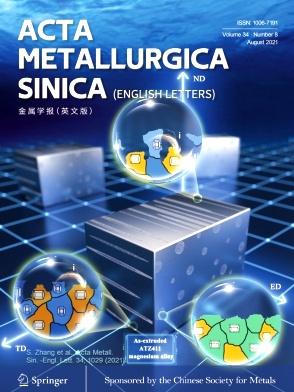Effect of Temperature and Grain Boundary on Void Evolution in Irradiated Copper: A Phase-Field Study
Abstract
The continued existence of high-energy radiation in nuclear reactors at high temperatures results in the formation of radiation-induced voids, which will further lead to inevitable swellings of polycrystalline structural components and thus premature failures. A deep understanding of the effect of temperature and grain boundary on void evolution in irradiated copper is significant for preventing this kind of failures. Here, the phase-field method was employed to study void evolution in irradiated copper under different temperatures and grain sizes. The results show that, due to the different sensitivities of point defect production rate and vacancy diffusion rate to temperature changes, both the nucleation-growth rate and the coarsening rate during void evolution increase first and then decrease with increasing temperature; moreover, the nucleation mechanism exhibits site-saturated nucleation at low temperatures while continuous nucleation at high temperatures. The presence of grain boundary can accelerate the emergence of void because grain boundaries can absorb more interstitials than vacancies. The finer the grain size, the stronger inhibitory effect of grain boundaries on the growth rate of void, due to the formation of void denuded zone near grain boundaries. At high temperatures, the growth rate of void in fine grains is significantly reduced due to the increase of vacancy diffusion rate and the enhancement of sink effect of grain boundary on vacancy.


 求助内容:
求助内容: 应助结果提醒方式:
应助结果提醒方式:


